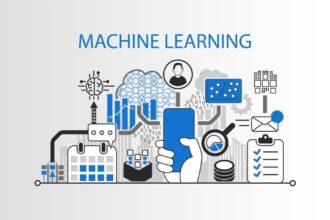While it might sound ironic that high-tech fields such as data science still require you to submit a resume, even the most cursory look over a list of job openings should prove this to be true. Managers and HR department staffers in even the most technically-oriented companies are actually on the lookout for candidates with an impressive resume. This might encourage some applicants to stretch the truth.
If you’re applying for a job in the IT or data science spaces, then you don’t want to do this. Consider adding statistics and other data points about your previous job, even if you don’t have exact numbers. This will give you the freedom to promote yourself as an expert without ever suggesting something that’s untrue.
Why Truth is So Important in Data Science Resumes
Human resources directors might not be directly related to the technology resources of most of the firms they represent, but that doesn’t mean they can’t leverage the same tools everyone else in said firms rely on. That means they’ll spot a lie, so you want to go over everything in your resume to make sure you were telling the truth.
That being said, the ideal length of a resume is somewhere around 475-600 words, so you shouldn’t feel like you’re under any pressure to put filler in there. Short and sweet rules the day, especially when you think about how many resumes some reviewers have to look through a day. While apps are indeed used to automatically process resumes and prevent any personal biases from leaking into the review process, the final decisions are still made by humans at even the leading data science firms.
As a result, you want to be concise as well as truthful. Perhaps most importantly, you want to present your information in a way that makes sense for the type of job you’re applying for.
Formatting Your Resume in the Preferred Way
Relatively few companies use automated resume application processes for professional employees. These are generally deployed only at facilities that expect a large degree of turnover, such as a retail operation. Anyone who is applying for a professional-level career at a place that manages large amounts of information is more than likely going to need to submit an old-fashioned resume.
A growing number of companies are actually asking potential hires to submit their resumes as traditional flat text files, which should be editable with almost any piece of software. Considering that computer professionals tend to be evenly split when it comes to GNU/Linux, Windows and Mac platform face-offs, this is pretty good news. Creating a resume that meets these requirements could be as easy as firing up your favorite notepad application and typing away.
Other organizations are starting to rely more heavily on the Roman Executive format, which first rose to prominence in the legal profession within the last decade or two. This may require you to be more careful when it comes to what sections you include, but you still won’t want to get carried away with employment history.
In fact, some observers feel that industry insiders now care more about skills than they do about the places that you may have worked in the past.
Balancing History with the Present
Chances are that you’ve worked several jobs in the past that don’t have anything to do with the IT or data science fields. While you might want to include these if they’re particularly impressive, you don’t need to write a complete employment history that stretches all the way back to your summer job during high school. Instead, you might want to narrow things down to jobs that show you have a background in data analytics.
You’ll certainly want to include any relevant educational experience or professional certifications that you might have, but more employers these days are probably looking for proof that you know how to do the kind of job that you’re applying for. Consider adding a dedicated technical skills section that spells out all of your various competencies.
While you don’t want to brag or sound shamelessly self-promotional, you should be honest about any area that you personally feel you excel in. Potential employers will expect that you’re able to do anything you put on this list, so be honest, but don’t be afraid to show yourself in the best possible light.
Once you’re done, read things over a few times before you finally submit your resume. Taking a little extra time to proofread can help you catch errors you might not otherwise have found.











